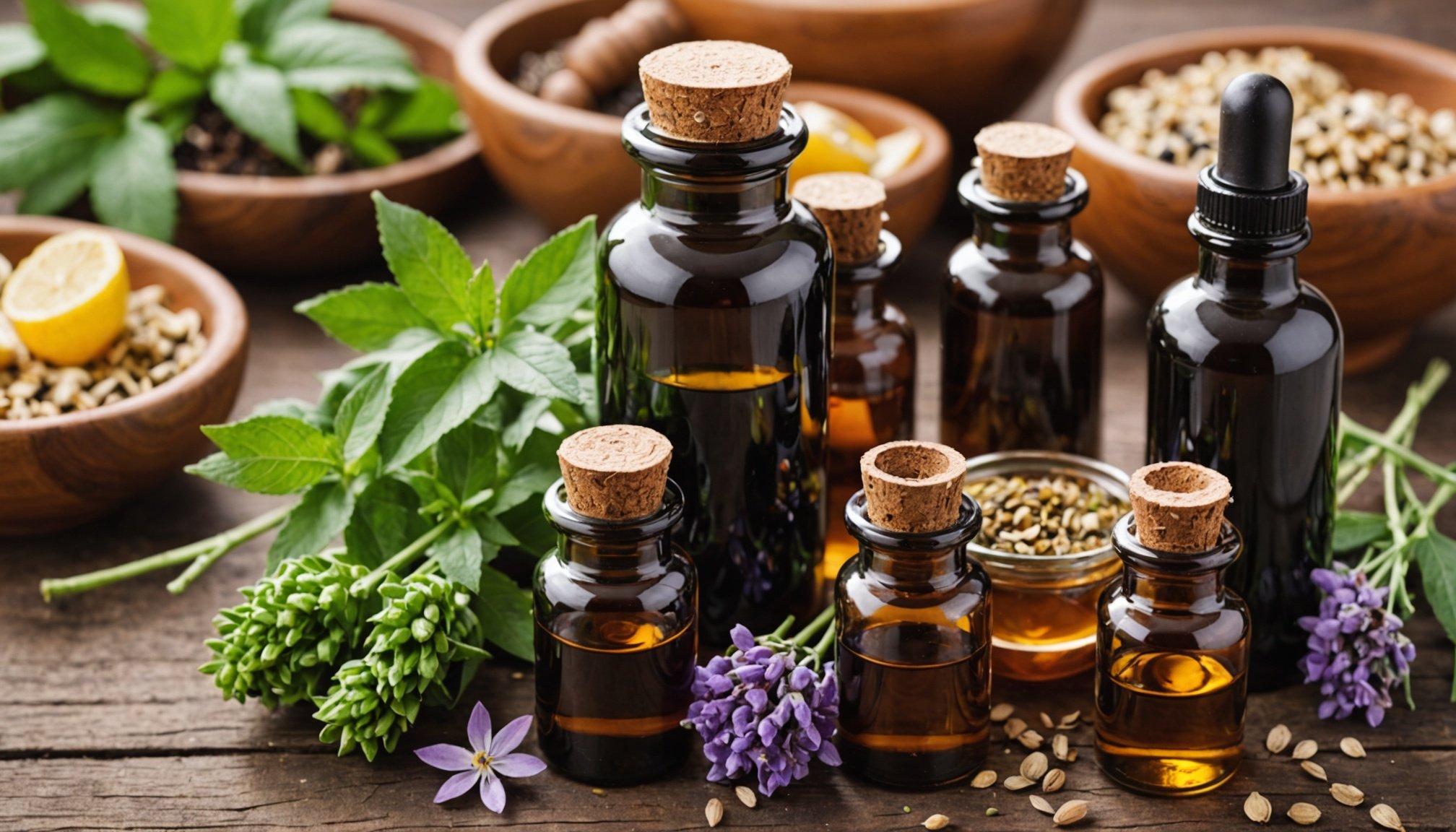Understanding Aromatherapy in Cancer Care
Aromatherapy, a form of complementary therapy, harnesses the healing properties of essential oils to promote physical and emotional well-being. This therapeutic practice involves diffusing or applying these oils to stimulate the body’s senses. By engaging the olfactory system, aromatherapy can offer relaxation, reduce anxiety, and improve overall mood—a natural alleviation method for some cancer-related symptoms.
Essential Oils in Cancer Care
When it comes to cancer care, specific essential oils like lavender, chamomile, and peppermint are often utilised for their calming and soothing properties. Lavender is renowned for its potential to relieve stress and induce sleep. Chamomile may help ease nausea, while peppermint is sometimes used to alleviate headaches. These oils are integrated into treatments tailored to the unique needs of each patient, promoting a sense of calm and comfort.
In parallel : Understanding emetophobia: break free from the fear of vomiting
Holistic Approaches in Patient Well-being
A holistic approach, which considers the patient’s mind, body, and spirit, is crucial in cancer care. Integrating aromatherapy into a holistic care plan can support traditional treatments by addressing emotional and mental health aspects. Such approaches seek to enhance quality of life by providing comprehensive care that acknowledges the individualised needs of each patient.
Evidence Supporting Aromatherapy’s Role with Conventional Treatments
Exploring the efficacy of aromatherapy alongside conventional treatments is becoming increasingly significant. Let’s delve into the research studies, clinical findings, case studies, and reviews of existing literature that highlight this synergy.
This might interest you : Unlocking Relief: The Impact of Plant-Based Supplements on Menstrual Disorder Symptoms
Clinical Findings
Recent research studies indicate that integrating aromatherapy with conventional cancer therapy may alleviate some treatment side effects, such as nausea, anxiety, and fatigue. These studies highlight how specific essential oils, like lavender and peppermint, are often utilised to complement traditional modalities, thereby enhancing patient comfort and overall wellness.
Case Studies
Numerous case studies reinforce the effectiveness of aromatherapy in a clinical setting. Patients undergoing chemotherapy, for example, have reported reduced levels of anxiety and a general improvement in mood when aromatherapy was incorporated into their treatment regimen. The integration of essential oils has shown promise, offering emotional and physical support alongside traditional methods.
Reviews of Existing Literature
A comprehensive review of existing literature further underscores the positive effects of aromatherapy in conjunction with conventional cancer therapy. These reviews provide evidence of reduced treatment side effects when both approaches are combined. The research suggests a promising potential for aromatherapy to serve as a complementary strategy, harmonising with traditional treatments to improve patient outcomes effectively.
Practical Applications of Aromatherapy for Patients
Incorporating aromatherapy into daily routines can offer comfort, especially for cancer treatment support. To use essential oils safely at home, it is crucial to understand their practical applications. First, always use a carrier oil to dilute essential oils before applying them to your skin. This reduces the risk of irritation or allergic reactions.
A practical tip is experimenting with a diffuser. It gently releases aromatic vapours into the air, calming the mind without direct skin contact. Essential oil blends specially crafted for cancer patients can also promote relaxation and emotional balance. Look for blends featuring lavender and chamomile, known for their soothing properties.
Integrating aromatherapy into your daily routine does not have to be complex. Add a few drops to your bath or infuse a compress for areas such as the neck or shoulders. These methods can provide a sense of tranquillity amid the stress and unpredictability that often accompany cancer treatments.
Always consult healthcare professionals when using aromatherapy for cancer treatment support. This ensures that there is no interference with ongoing treatments while embracing the beneficial aspects of these natural remedies. Remember, the key to effective aromatherapy application lies in safety and consistency.
Expert Opinions on Aromatherapy’s Role in Cancer Care
In the evolving world of integrative medicine, the role of aromatherapy in cancer care garners varying expert insights. Let’s delve into perspectives from the medical community and beyond.
Interviews with Oncologists
Oncologists play a pivotal role in navigating the complexities of cancer treatment, and their insights are invaluable when considering supplementary therapies like aromatherapy. Many oncologists acknowledge the potential benefits of aromatherapy in alleviating symptoms such as nausea, anxiety, and pain. However, they advise that it should be used in conjunction with conventional treatments rather than replacing them. They stress the importance of ensuring that patients consult with their healthcare provider before initiating any new therapy.
Perspectives from Aromatherapy Practitioners
Certified aromatherapists often recommend specific blends of essential oils tailored to individual patient needs. They emphasize a holistic approach where aromatherapy integrates seamlessly with other aspects of a patient’s care plan. Practitioners highlight essential oils that are reputed for their calming and uplifting properties, aiming to enhance overall well-being and emotional resilience during challenging treatments.
Testimonials from Patients
Patients’ experiences shed light on real-world applications and outcomes. Anecdotal evidence from patients suggests that aromatherapy provides a sense of empowerment and control over their healing journey. They report improved mood and relaxation, translating into an enhanced ability to cope with the rigours of cancer treatment.
Addressing Misconceptions and Risks
When considering aromatherapy as a complementary approach, it’s crucial to dispel misconceptions and understand potential risks. Many assume that aromatherapy alone can treat serious conditions like cancer. However, while aromatherapy may support emotional and psychological well-being, it is not a substitute for conventional cancer treatments. Rather, it can complement these treatments by potentially alleviating some side effects like anxiety or nausea.
Misconceptions also linger around the safety of essential oils. Natural does not automatically mean safe. Oils can cause skin irritations or have adverse effects when used improperly. Therefore, understanding safe practices, such as diluting oils and conducting patch tests, is vital for anyone seeking safety in aromatherapy.
Moreover, potential interactions with conventional treatments exist, especially since some oils might interfere with medications. Consulting healthcare providers before starting any new therapy ensures a comprehensive treatment plan without unwanted interactions.
Key guidelines for safe usage include:
- Always dilute essential oils before topical application.
- Avoid contact with eyes and mucous membranes.
- Store oils out of reach of children and pets.
By staying informed about the risks and practices surrounding aromatherapy, users can enjoy its benefits while ensuring safety.
Balancing Aromatherapy and Conventional Treatments
Balancing aromatherapy with conventional treatments can create a more holistic approach to care. By using integration strategies, patients can benefit from complementary therapies alongside established treatments, ensuring a comprehensive treatment plan tailored to their specific needs.
Developing a Personalized Care Plan
Incorporating aromatherapy requires a careful and individualized approach. Patient-centered care is essential, allowing for treatments that cater specifically to a patient’s needs and preferences. Creating a personalized care plan involves consulting with healthcare professionals to understand how aromatherapy can be safely and effectively integrated with conventional treatments. By considering each patient’s unique situation, healthcare providers can tailor the use of complementary therapies to enhance overall wellbeing.
Collaborating with Healthcare Providers
Collaborative efforts between patients and healthcare providers are vital for successful integration. Healthcare providers bring expertise in recognizing potential interactions and ensuring safe usage of aromatherapy alongside traditional medications. A coordinated approach ensures that all treatments are in harmony, optimising therapeutic benefits while minimizing risks.
Monitoring Treatment Outcomes
Ongoing monitoring of treatment outcomes is crucial. It involves tracking the effectiveness of the combined treatments and making necessary adjustments to the care plan. Patient feedback, specific health metrics, and regular evaluations by the healthcare team play a significant role in assessing whether the integration of aromatherapy is beneficial. This continuous process ensures that care remains effective and aligned with the patient’s evolving health needs.











